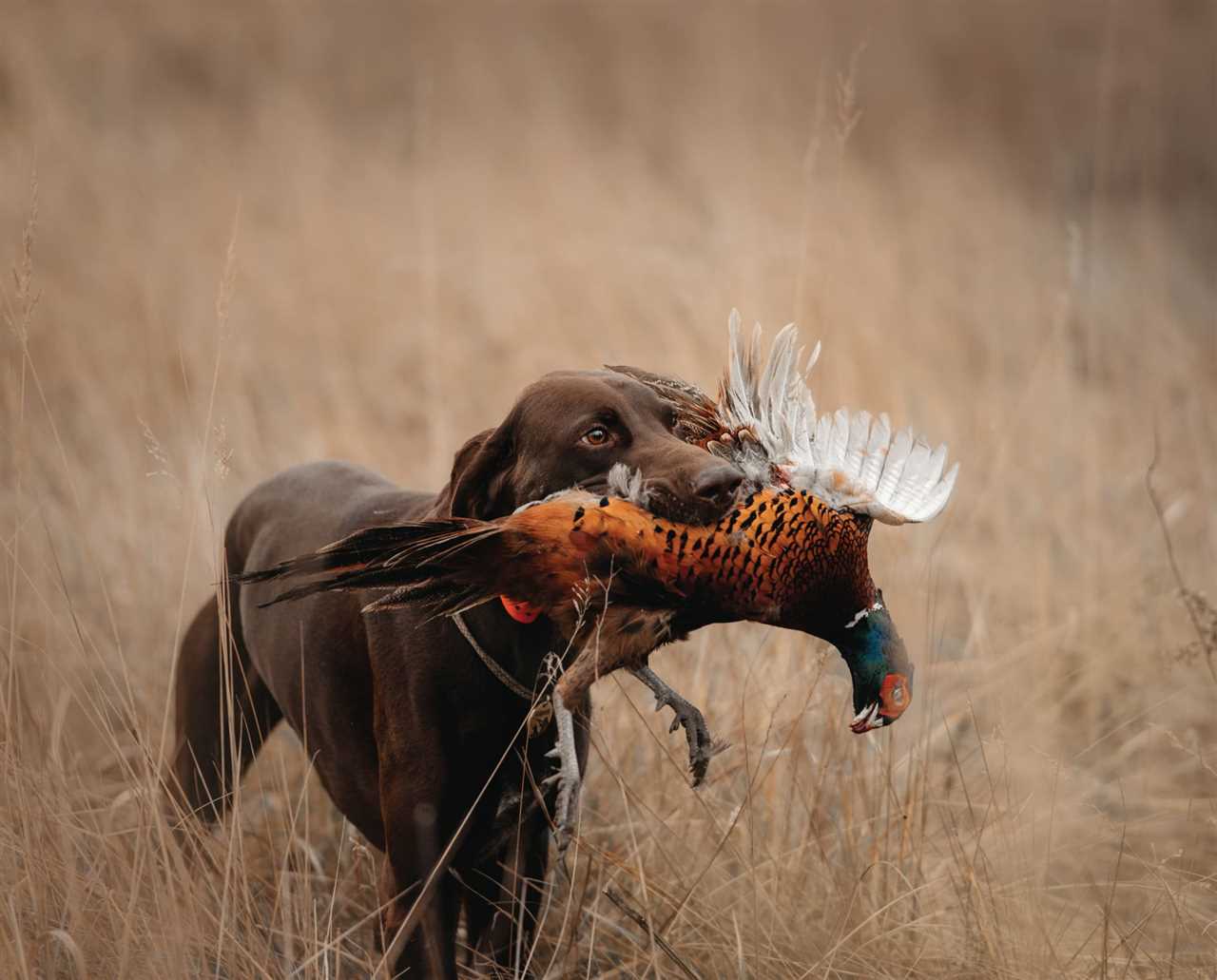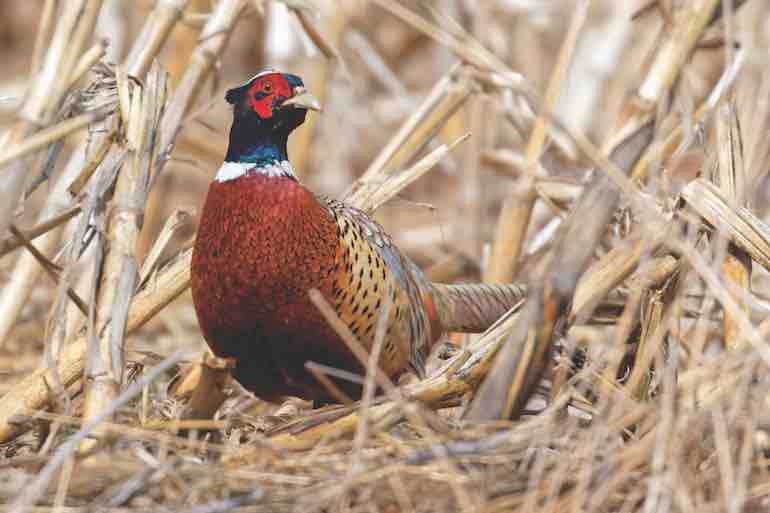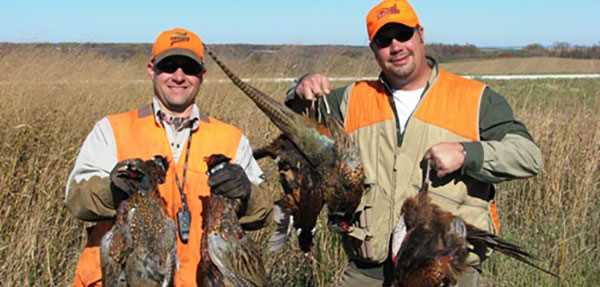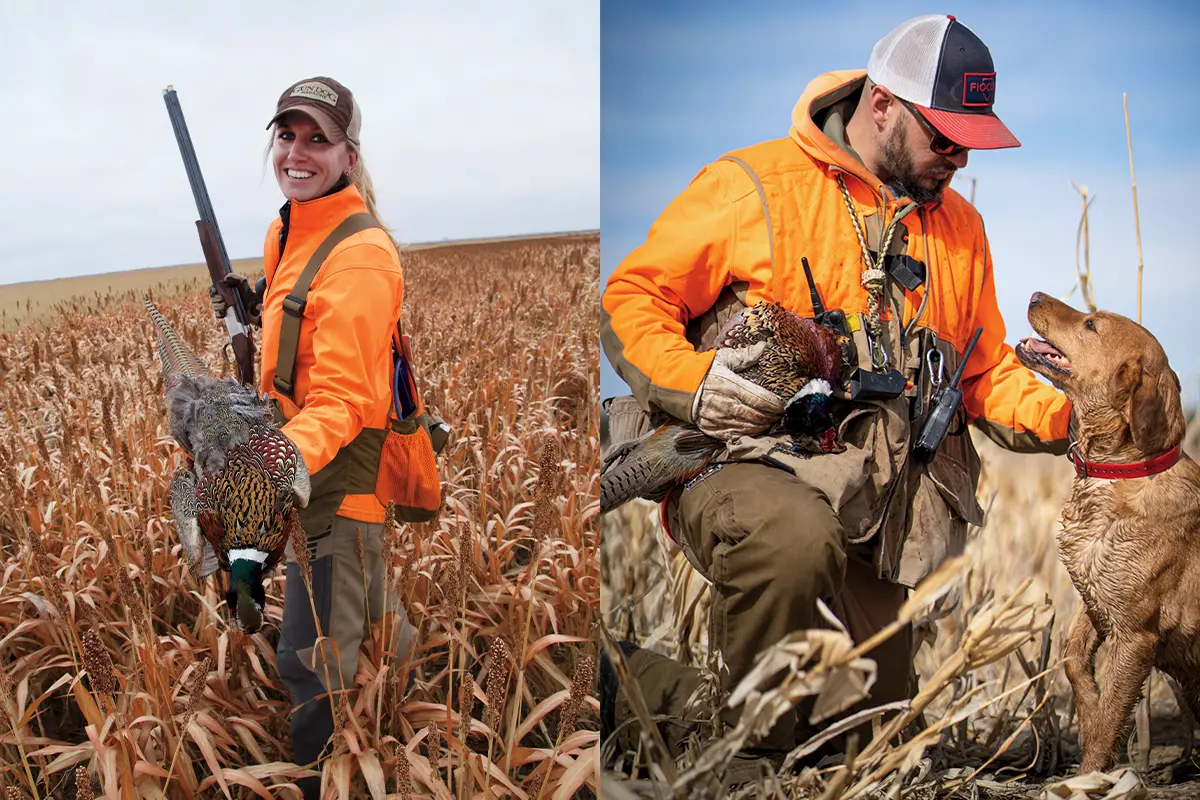Contents
The Complete Manual for Mi Pheasant Hunting: Expert Tips, Tactics, and Top Locations

When it comes to hunting in Michigan, one of the most popular and exciting options is pheasant hunting. Known for their vibrant feathers and elusive nature, pheasants offer a challenging and rewarding hunting experience. Whether you’re a seasoned hunter or a beginner looking to try something new, this ultimate guide will provide you with all the tips, tactics, and best locations for a successful pheasant hunting adventure in Michigan.
Hunting Tips:
1. Scout the Area: Before heading out to hunt pheasants, it is essential to scout the area beforehand. Look for fields, grasslands, or any habitat that provides cover and food sources for pheasants. This will increase your chances of finding and targeting pheasants in their natural habitat.
2. Brush Up on Shooting Skills: Pheasants are known for their ability to fly swiftly and unpredictably, making accurate shooting a crucial skill. Dedicate some time to practice your shooting skills before the hunting season to ensure that you’re ready to take a shot when the opportunity presents itself.
3. Use the Right Gear: To maximize your chances of success, make sure to use the right gear for pheasant hunting. This includes a shotgun with an appropriate choke, suitable ammunition, and clothing that provides camouflage and protection from the elements.
Tactics:
1. Walk-Up Hunting: One of the most common tactics used in pheasant hunting is walk-up hunting. This involves walking through fields or cover areas in a line, flushing out pheasants as you move. It is essential to maintain a steady pace and communicate with your hunting partners to ensure safety and maximize efficiency.
2. Block Hunting: Another effective tactic for pheasant hunting is block hunting. This tactic involves strategically positioning hunters in a field or cover area to block the escape routes of pheasants, while other hunters walk through and flush them out. This tactic requires careful coordination and communication among hunting partners.
3. Use Hunting Dogs: Hunting with well-trained hunting dogs can significantly increase your chances of success in pheasant hunting. Dogs can sniff out pheasants, flush them out of cover, and retrieve downed birds. Be sure to train your dog specifically for pheasant hunting and follow local regulations regarding the use of hunting dogs.
Best Locations:
Michigan offers a variety of excellent locations for pheasant hunting. Some of the best areas include state game areas, wildlife management areas, and private hunting preserves that specialize in pheasant hunting. Be sure to research and obtain the necessary permits and licenses before hunting in any specific location.
Here are a few top locations in Michigan for pheasant hunting:
1. Shiawassee River State Game Area: Located in Saginaw County, this game area offers open fields and cover areas that are ideal for pheasant hunting. It is known for its abundant pheasant population and beautiful scenery.
2. Tuscola State Game Area: Situated in Tuscola County, this game area features a mix of open fields, brushy areas, and wetlands that provide ideal pheasant habitat. It offers a challenging hunting experience for both experienced and novice hunters.
3. Thunderbird Shooting Grounds: Located in Mount Pleasant, Thunderbird Shooting Grounds is a private hunting preserve that specializes in pheasant hunting. It offers guided hunts and well-managed fields, providing a premier pheasant hunting experience.
With these tips, tactics, and best locations, you’re well-equipped for a successful and memorable pheasant hunting trip in Michigan. Remember to always prioritize safety, follow hunting regulations, and respect the environment while enjoying this thrilling outdoor activity.
Tips for a Successful Mi Pheasant Hunting Experience

When it comes to pheasant hunting in Mi, there are a few key tips to keep in mind that can help ensure a successful and enjoyable experience. Whether you’re a seasoned hunter or new to the sport, these tips can help improve your chances of bagging a trophy bird.
1. Scout the area
Before heading out into the field, it’s important to scout the area where you plan to hunt. Look for areas with a good amount of cover, such as cattails, brush, and thick grasses. Pheasants are known to seek cover in these types of areas, so focusing your hunting efforts here can increase your chances of finding birds.
2. Choose the right time of day
Pheasants are most active during early morning and late afternoon, so plan your hunt accordingly. These are the times when they are more likely to be out and about, feeding and moving around. By hunting during these peak times, you’ll have a better chance of encountering pheasants and having a successful hunt.
3. Use the right equipment
Having the right equipment can make a big difference in your pheasant hunting experience. Make sure you have a shotgun that is appropriate for pheasant hunting, such as a 12-gauge or 20-gauge, and choose the right ammunition for the job. It’s also important to have proper hunting attire, including blaze orange clothing to ensure your safety and visibility to other hunters.
4. Employ effective hunting tactics
There are several hunting tactics that can be effective when pheasant hunting in Mi. One popular technique is to use a trained hunting dog to help flush out birds and retrieve downed birds. Another tactic is to walk in a line with other hunters, known as a “drive,” to cover a larger area and flush out pheasants. Ultimately, the key is to be patient, observant, and strategic in your hunting approach.
5. Practice firearm safety
Firearm safety is crucial when participating in any hunting activity. Always treat your firearm as if it is loaded, and never point it at anything you do not intend to shoot. Be aware of your surroundings and the location of other hunters, and always be sure of your target before taking a shot. By practicing proper firearm safety, you can ensure a safe and enjoyable pheasant hunting experience for everyone involved.
By following these tips, you’ll be well on your way to a successful pheasant hunting experience in Mi. Remember to always respect the land, wildlife, and other hunters, and to enjoy the beauty and challenge that comes with this popular hunting pursuit.
Choosing the Right Gear

When it comes to mi pheasant hunting, having the right gear can make all the difference. Here are a few essential items that you should consider adding to your hunting arsenal:
Shotgun: Choosing the right shotgun is crucial for a successful mi pheasant hunt. Opt for a 12-gauge or 20-gauge shotgun with a modified choke, as it provides a good balance of power and accuracy. Make sure the shotgun fits you well and practice before hitting the field.
Ammunition: Selecting the right ammunition is also important. For mi pheasant hunting, use shot sizes ranging from 4 to 6, depending on the distance you’ll be shooting. Experiment with different loads to find the one that gives you the best pattern and performance.
Clothing: Dressing appropriately for mi pheasant hunting is essential to stay comfortable and concealed. Wear clothing that offers both warmth and mobility, such as a camouflage hunting jacket, insulated pants, and waterproof boots. Don’t forget to wear a blaze orange hat or vest for safety.
Binoculars: A good pair of binoculars can be useful for spotting pheasants in the distance. Look for lightweight, compact binoculars with a magnification of around 8x or 10x. This will help you spot birds and identify their movements even in dense cover.
Dog and Accessories: Hunting with a well-trained dog can greatly enhance your mi pheasant hunting experience. Choose a breed that is well-suited for bird hunting, such as a Labrador Retriever or English Springer Spaniel. Additionally, invest in accessories like a dog collar, leash, and a hunting vest for your furry hunting companion.
Blinds and Decoys: Setting up a hunting blind or using decoys can increase your chances of attracting pheasants. Portable blinds provide concealment, while decoys can draw birds into shooting range. Consider using both to create an effective setup for mi pheasant hunting.
Hunting Backpack: A sturdy hunting backpack is essential for carrying all your gear and supplies. Look for a backpack with multiple compartments and a capacity that can accommodate necessary items like water, snacks, ammo, a first aid kit, and extra clothing layers.
Remember, choosing the right gear is crucial for a successful mi pheasant hunting experience. Invest in quality equipment, practice with it before your hunt, and make sure it suits your needs and preferences. With the right gear, you’ll be ready to tackle the mi pheasant hunting season with confidence.
Understanding the Habits and Behavior of Pheasants

When it comes to hunting pheasants in Michigan, it’s important to have a good understanding of their habits and behavior. This knowledge can help you plan your hunting strategy and increase your chances of a successful hunt.
Pheasants are primarily ground-dwelling birds that prefer grasslands and agricultural areas as their habitat. They are known for their distinct cackling call and their colorful plumage, with males being more vibrant than females.
One key behavior to note is that pheasants are generally more active during the early morning and late afternoon hours. This is when they are most likely to be feeding and moving around in search of food. Therefore, it’s a good idea to plan your hunting trips during these times for the best chance of spotting and shooting a pheasant.
When it comes to their feeding habits, pheasants are omnivorous and will eat a variety of foods. They primarily feed on seeds, grains, and insects, so areas with a good food source are likely to attract more pheasants. It’s also worth noting that pheasants prefer areas with nearby cover, such as tall grasses or brush, where they can hide and feel protected.
Pheasants are also known for their tendency to run or walk rather than fly when they are startled. This means that you may encounter them on the ground rather than in the air, so it’s important to be prepared for this behavior. Additionally, pheasants have a strong sense of hearing and can quickly become alert to any noise or movement, so it’s important to be as quiet and still as possible when hunting them.
In summary, understanding the habits and behavior of pheasants is crucial for a successful mi pheasant hunting trip. Knowing when and where to find them, what they eat, and how they move can greatly increase your chances of a successful hunt. Good luck!
Preparing for the Hunt

Before heading out on your pheasant hunting adventure, it’s essential to make sure you’re properly prepared. Here are some tips to help you get ready:
- Research Hunting Regulations: Before you start hunting, familiarize yourself with the pheasant hunting regulations in your area. This includes learning about hunting seasons, bag limits, and any special permits or licenses you may need.
- Gather the Right Gear: Having the right equipment is crucial for a successful pheasant hunt. Make sure you have a reliable shotgun with appropriate ammunition, as well as hunting clothing that provides camouflage and protection from the elements.
- Practice Shooting: Brush up on your shooting skills before hitting the field. Visit a shooting range to practice your aim and accuracy, so you’re confident when it comes time to take a shot at a pheasant.
- Train Your Hunting Dog: Hunting with a well-trained dog can greatly enhance your pheasant hunting experience. If you have a hunting dog, make sure they are trained to flush out and retrieve pheasants. If you don’t have a hunting dog, consider partnering with someone who does.
- Scout Potential Hunting Locations: Learn about the best hunting locations in your area. Talk to local hunters, join hunting forums, and study maps to find potential hotspots for pheasants. Look for areas with good cover, such as grasslands, croplands, and wetlands.
- Stay Fit and Be Prepared for the Outdoors: Pheasant hunting can be physically demanding, so make sure you’re in good shape. Stay active and prepare yourself for long walks over uneven terrain. Also, pack essential items such as water, snacks, first aid kit, and a hunting knife.
By taking the time to prepare properly, you’ll increase your chances of having a successful and enjoyable pheasant hunting experience. Good luck and happy hunting!
Tactics to Improve Your Mi Pheasant Hunting Game

If you’re an avid hunter in Mi, pheasant hunting can provide an exciting and challenging experience. To enhance your game and increase your chances of success, consider incorporating these tactics into your hunting strategy.
Scouting: Before heading out into the field, take the time to scout the area you plan to hunt. Look for signs of pheasant activity such as feathers, tracks, and roosting locations. Understanding the birds’ behavior and habitat preferences will give you an advantage when it comes to finding and flushing them out.
Camouflage and Concealment: Pheasants have keen eyesight and can easily spot a hunter in bright clothing. Wear camouflage that matches the surroundings to blend in and avoid detection. Use natural cover, such as trees, bushes, or tall grass, to stay hidden while you wait for the perfect shot.
Calling: Mastering the art of pheasant calling can significantly improve your hunting game. Practice different calls, such as the basic cackle, cluck, or crowing sounds, to lure pheasants out of cover or create the illusion of other birds in the area. However, be mindful of not overcalling, as it may make the birds suspicious.
Working with Dogs: Well-trained hunting dogs can be invaluable assets when it comes to pheasant hunting. Labs, pointers, or spaniels are commonly used breeds that can help locate, flush out, and retrieve pheasants. If hunting with a dog, ensure they are properly trained to work in tandem with you and follow commands.
Walk and Flush: Mi pheasant hunting often involves a walk and flush technique. Organize a line of hunters who walk through a field, forcing pheasants to take flight. This tactic can be highly effective, especially when combined with proper coordination and communication with your fellow hunters.
Patience and Persistence: Pheasant hunting requires patience and persistence. Be prepared for long periods of waiting and remain focused and alert. Move slowly and quietly through the field, scanning for any signs of movement. Remember, pheasants are known for their ability to suddenly burst into flight, so be ready for a quick shot when the opportunity presents itself.
By implementing these tactics into your Mi pheasant hunting game, you can enhance your skills, increase your chances of success, and make your hunting experience even more enjoyable.
Scouting the Hunting Grounds in Advance

When it comes to pheasant hunting in Mi, scouting the hunting grounds in advance can make all the difference. By familiarizing yourself with the area before the hunt, you can increase your chances of success and have a more enjoyable experience overall.
One of the first things you’ll want to do is research the best locations for pheasant hunting in Mi. Look for areas that are known to have high populations of pheasants and favorable hunting conditions. This information can usually be found online or by talking to local hunters and game wardens.
Once you’ve identified a few potential hunting grounds, it’s time to hit the field and do some scouting. Start by looking for signs of pheasant activity, such as tracks, feathers, and feeding areas. These can indicate where the birds are likely to be concentrated.
It’s also important to consider the terrain of the hunting grounds. Pheasants prefer areas with a mix of open fields, grasslands, and brushy cover. Look for areas that provide these types of habitat, as they are likely to attract pheasants.
During your scouting trips, take note of any potential obstacles or hazards that could affect your hunt. These could include dense thickets, fences, or bodies of water. By identifying these obstacles in advance, you can plan your hunting strategy accordingly.
Finally, don’t forget to check for any hunting regulations or restrictions in the area you plan to hunt. Make sure you have the necessary licenses and permits, and always follow the rules and regulations set forth by the local wildlife authorities.
Scouting the hunting grounds in advance may require some extra time and effort, but it can pay off in the end. By knowing where the pheasants are likely to be and how to navigate the terrain, you’ll have a better chance of bagging a trophy bird. So grab your gear, lace up your boots, and get out there to scout the hunting grounds before the big day!
Utilizing Effective Calling Techniques

When it comes to mi pheasant hunting, calling can be a crucial technique for attracting and luring in these elusive birds. By mastering effective calling techniques, hunters can significantly improve their chances of success. Here are some tips on how to effectively use calls while hunting for pheasants in Michigan:
- Choose the right call: There are various types of calls available, including box calls, mouth calls, and electronic calls. Experiment with different calls to find the one that works best for you.
- Start with soft calls: Begin with soft calls to mimic the sounds of a contented pheasant. This can help to create a sense of security and comfort, making the birds more likely to approach.
- Gradually increase volume and intensity: If soft calls don’t attract any attention, gradually increase the volume and intensity of the calls. This can help to grab the birds’ attention and pique their curiosity.
- Imitate natural pheasant sounds: Try to imitate the sounds made by pheasants, such as clucks, cackles, and crowing sounds. This can make your calls sound more realistic, increasing the chances of luring in the birds.
- Use different call patterns: Mix up your calling patterns to mimic the natural behaviors of pheasants. This can include series of short calls followed by longer pauses or quick succession of loud calls.
- Stay patient and observant: After making a call, give the birds some time to respond and approach. Be patient and observant, as pheasants can be cautious and take their time to approach the calling area.
- Consider decoys: Along with calling, using decoys can further enhance your chances of attracting pheasants. Place decoys strategically to create a realistic scene that can entice the birds to investigate.
- Practice makes perfect: Like any skill, calling requires practice. Spend time honing your calling techniques before heading out for your mi pheasant hunting trip. This will help you become more confident and proficient.
By utilizing these effective calling techniques, you can increase your chances of success during your mi pheasant hunting adventures. Remember to always follow local hunting regulations and practice ethical hunting practices.

A skilled hunter, dedicated conservationist, and advocate for ethical practices. Respected in the hunting community, he balances human activity with environmental preservation.
